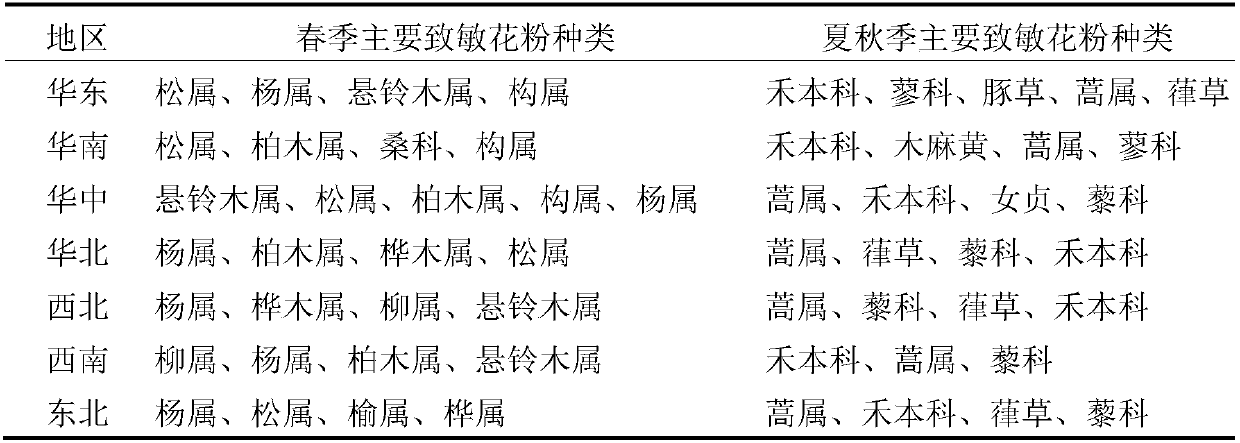Thinning chemical for plant pollen and thinning method for plant pollen
A plant pollen removal technology, applied in botany equipment and methods, plant growth regulators, plant growth regulators, etc., can solve problems such as abnormal work, study and life, surge in outpatient visits for allergic people, economic losses, etc. , to achieve the effect of plant safety, economical and practical, convenient for large-scale promotion and use, and removal of plant pollen
- Summary
- Abstract
- Description
- Claims
- Application Information
AI Technical Summary
Problems solved by technology
Method used
Image
Examples
Embodiment 1
[0046] The original drug and auxiliary agent are compounded into 20% wettable powder, wherein the original drug includes forchlorfenuron, paclobutrazol, 5-(4,6-dimethyloxypyrimidine-2 -base) carbamoyl sulfamoyl-1-methylpyrazole-4-ethyl carboxylate, auxiliary agent selects NP10, white carbon black, kaolin, and the percentage by weight of each component is as follows: former medicine 20%, NP10 10 %, white carbon black 15%, and kaolin to make up to 100%. The preparation process is to mix each component evenly in a double-screw mixer according to weight percentage, and then pulverize it through an ultrafine pulverizer or jet pulverizer to control the particle size to be less than 325 mesh (wet sieving method), and then mix evenly in another double-screw mixer to obtain 20% wettable powder.
Embodiment 2
[0048] The original drug and auxiliary agents are compounded into 20% wettable powder, wherein the original drug includes indole ester, chlorphenamine, 2',6'-difluoro-5-methoxy in a weight ratio of 1:1:3 Base-8-fluoro[1,2,4]triazol[1,5-c]pyrimidine-2-sulfonanilide, the auxiliary agent is NP10, white carbon black, kaolin, and the weight percentage of each component is as follows: 20% medicine, NP10 10%, white carbon black 15%, kaolin to make up to 100%, the preparation process is to mix each component evenly in a double-screw mixer according to weight percentage, and then pulverize through an ultrafine pulverizer or jet pulverizer , control the particle size to be less than 325 mesh (wet sieving method), and then mix evenly in another double-screw mixer to obtain 20% wettable powder.
Embodiment 3
[0050] The original drug and the auxiliary agent are compounded into 20% wettable powder, wherein the original drug includes 6-benzylaminopurine, GA3, triiodobenzoic acid, 2-[4, 5-dihydro-4-methyl-4-(1-methylethyl)-5-oxo-1H-imidazol-2-yl]-5-ethyl-3-pyridinecarboxylic acid, the auxiliary agent is NP10 , white carbon black, kaolin, the percentage by weight of each component is as follows: 20% of the original drug, 10% of NP10, 15% of white carbon black, and kaolin is added to 100%. After mixing evenly in the mixer, pulverize through a superfine pulverizer or jet mill, control the particle size to be less than 325 mesh (wet sieve method), and then mix evenly in another double-screw mixer to get 20% available Wet powder.
PUM
 Login to View More
Login to View More Abstract
Description
Claims
Application Information
 Login to View More
Login to View More - R&D
- Intellectual Property
- Life Sciences
- Materials
- Tech Scout
- Unparalleled Data Quality
- Higher Quality Content
- 60% Fewer Hallucinations
Browse by: Latest US Patents, China's latest patents, Technical Efficacy Thesaurus, Application Domain, Technology Topic, Popular Technical Reports.
© 2025 PatSnap. All rights reserved.Legal|Privacy policy|Modern Slavery Act Transparency Statement|Sitemap|About US| Contact US: help@patsnap.com



